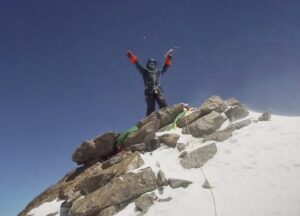Every spring for over a century, the American Alpine Club announces the American expeditions they will support with a Cutting Edge Grant. The grant only supports pure alpine-style projects to difficult, remote mountains.
This year, we will see action on five peaks: Shivling, Yashkuk Sar, Jannu East, Ultar Sar, and Chiling II. In a new series, we’ll take a short look at the climbing history of each peak. We begin with 6,543m Shivling.
Shivling and the Gangotri group
Shivling is located in the Gangotri Valley in India’s western Garhwal Himalaya. The Gangotri group features several challenging mountains, including 7,138m Chaukhamba I, 6,940m Kedarnath, 6,904m Thalay Sagar, 6,660m Meru, 6,856m Bhagirathi I, and 6,543m Shivling.

The Gangotri Glacier. A yellow dot marks Shivling. Photo: Harish Kapadia
Despite its prominence of just 850m, Shivling is a striking peak. It lies near the snout of the Gangotri Glacier, six kilometers south of the holy site of Gaumukh. Gaumukh is the source of the Bhagirathi River, one of the primary headwaters of the Ganges River.
Gaumukh means “mouth of a cow” and is mentioned in Hindu texts such as the Puranas. According to legend, a boy searching for a lost sheep found the glacier in Gangotri and likened the snout to a cow’s face.
Between Gaumukh and Shivling lies the Tapovan meadow, a popular pilgrimage site and the usual base camp for mountaineers attempting Shivling.
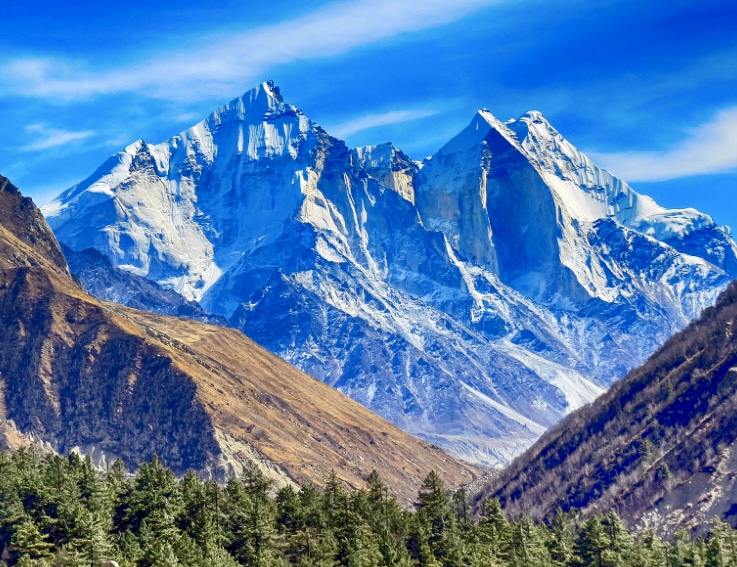
The Bhagirathi group. Photo: Wikipedia
Shivling is a symbol of the god Shiva and the most revered peak in the Gangotri group. From afar, Shivling seems like a perfect pyramid, but it has twin summits. The northeastern summit is 6,543m and the southwestern measures 6,501m. There are no easy climbing routes on either peak.
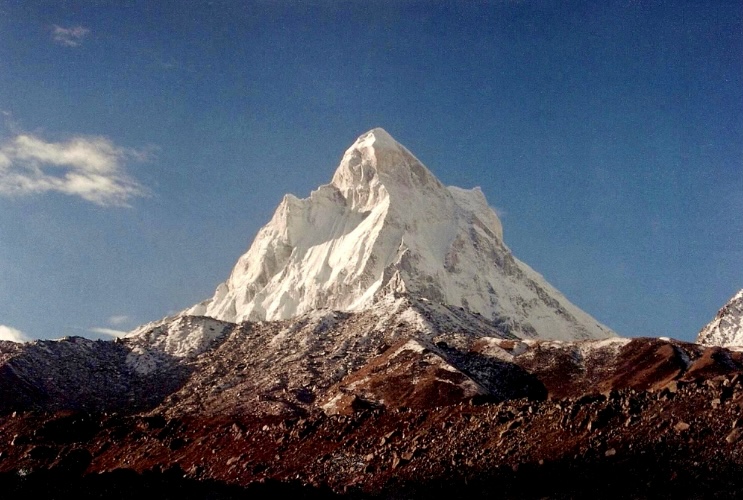
Shivling. Photo: Subarno Banerjee
A Himalayan Matterhorn
Two Scottish army officers, Alexander Gerard and brother James Gilbert Gerard discovered the snout of the Gangotri Glacier in 1818. After they publicized their find, the site became a popular pilgrimage destination.
In 1933, Greek-British author and mountaineer Marco Alexander Pallis led a small expedition to the nearby Kinnaur area and possibly climbed 6,816m Reo Purgyil. He considered trying Shivling too. Pallis described the peak as “a horrid-looking mountain with a striking resemblance to the Matterhorn…beautifully alluring, hideously inaccessible.”
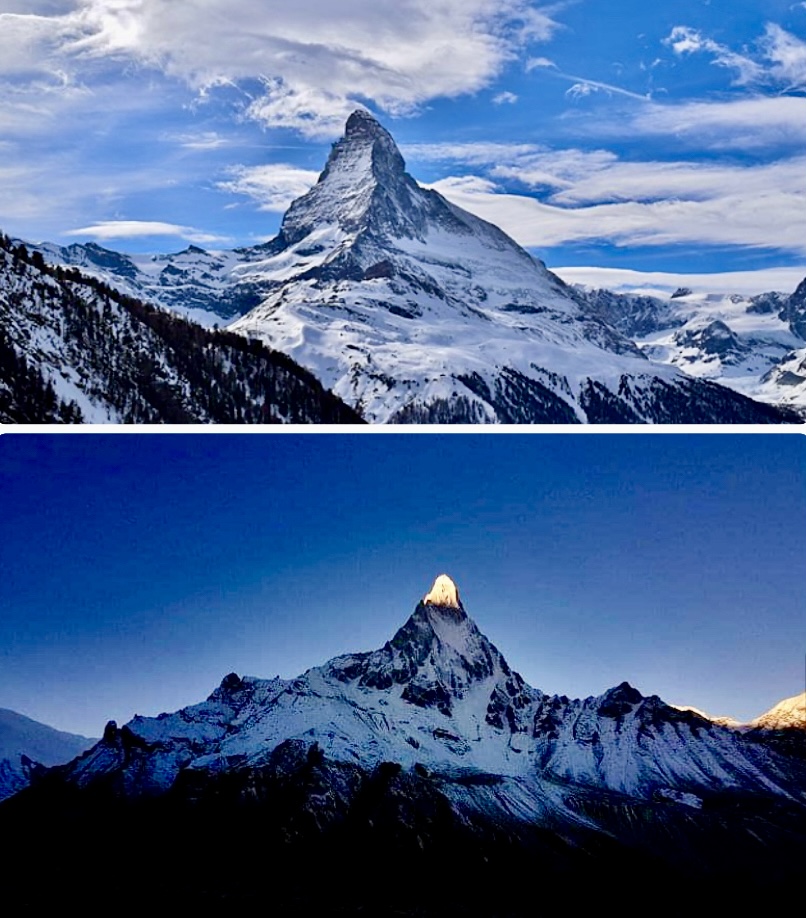
The upper photo is the Matterhorn, and below is Shivling. Photo: Wikimedia
No feasible route
In 1938, a German expedition led by Rudolf Schwarzgruber headed to the Garhwal Himalaya to explore the Gangotri Glacier. The team included Edi Ellmauthaler, Walter Frauenberger, Toi Meszner, Leo Spannraft, and Dr. Rudolf Jonas.
The party scouted Shivling. Schwarzgruber later wrote for the Himalayan Club that “disappointment was caused by a reconnaissance to the north of Shivling, that mountain which our British predecessors had called the Matterhorn peak…No feasible route up this mountain could be discovered. The only possible but extremely dangerous way leads across the northwest face, which is overhung by threatening ice-towers.”
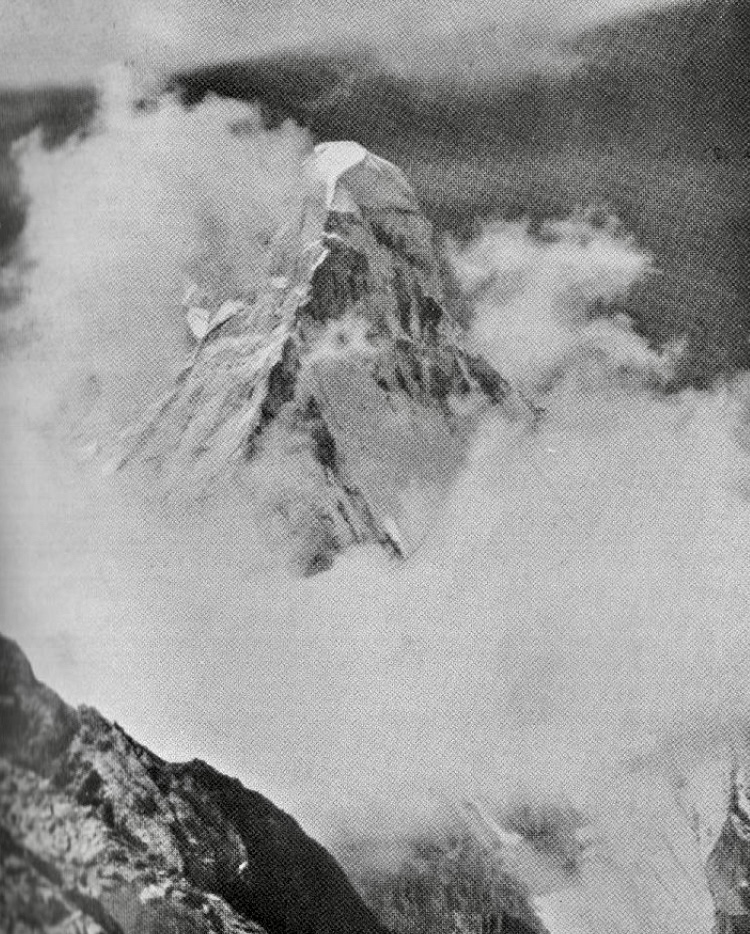
Shivling during the 1938 expedition. Photo: Rudolf Schwarzgruber
The first ascent of Shivling
Shivling was first ascended on June 3, 1974, by Laxman Singh, Dorje, Ang Tharkey, Pemba Tharkey, and Pasang Tsering Sherpa. Led by Hukam Singh, they were members of the Indo-Tibetan Border Police. The party went up the west ridge, which later became the normal route.
They established three camps. It was tough going, according to Kamal K. Guha’s report for the American Alpine Journal. From Camp 1 at 5,486m to the summit, the route was sheer rock, overhanging in places. During the final pitches, a steep ice wall and a hanging glacier required expert rock and ice technique. The team fixed over 2,130m of rope along the route.
On May 26 and 30, the party made two aborted summit bids. Bad weather beat them back. Finally, on the third try, they summited.
Other small teams from the Indo-Tibetan Border Police also climbed 6,940m Kedarnath and 6,596m Nilkantha in May and June of 1974.

Shivling from the northeast. Not every route is marked. The foreground rocky peak on the right is Baby Shivling (5,500m). 1. East ridge (1,300m, 56 pitches, TD+ UIAA VI+ A2/A3m Bettembourg-Child-Scott-White, 1981). 2. NE face (1,300m, UIAA VI A1 85/90º, Bernascone-Manoni-Rosso, 1986). 3. Shiva’s Ice (1,100m, WI5 M6, Gietl-Messini, 2017). 4. NE Pillar/North Pillar, South Tyrol Start (1,100m, Hainz- Kammerlander, 1993, finished up Japanese Route). 5. N Pillar, couloir start (first ascent unknown, though the couloir was certainly climbed during an attempt in 2000). 6. N Pillar, original Japanese Route (1,200m, 52 pitches, 3,000m of fixed rope, Fujita-Kubo-Yamamoto, 1980). 7. N Pillar direct finish, Shiva’s Line (1,100m, though only 400m of new climbing, UIAA VII A4, Huber-Wolf, 2000). 8. N Face to NW Ridge (1,400m, IV+/V 70º, Hiraide-Taniguchi, 2005. Photo: Vittorio Messini
Still a challenging objective for elite climbers
Since its first ascent, about 10 routes have been established on Shivling. Fifty-five teams have targeted the mountain. Climbers have ascended almost all its ridges and major faces, but every route represents a serious challenge.
In 2012, Valery Rozov made an impressive wingsuit flight from the mountain.

The last attempt on Shivling was in 2023. Photos: Chantel Astorga and Fanny Schmutz
A new route in 2024?
Shivling saw most action in the 1980s and 1990s, but there have been some recent expeditions. Chantel Astorga and Fanny Schmutz made the last attempt in 2023. Astorga and Schmutz opted for an objective that involved mixed and big-wall climbing.
“As is often the case with ambitious alpine climbing expeditions in the Himalaya, it’s difficult to open a new route on the first try,” Astorga wrote after their return.
The pair faced the heat and quite a bit of rain to 6,000m. “After spending five weeks at our base camp [at Tapovan], we learned a lot about the line, and it was a great experience being with Fanny [Schmutz],” Astorga wrote.
Astorga received a 2024 Cutting Edge Grant to return to Shivling. With Schmutz, she will make a second attempt at a direct route on the east face this year.
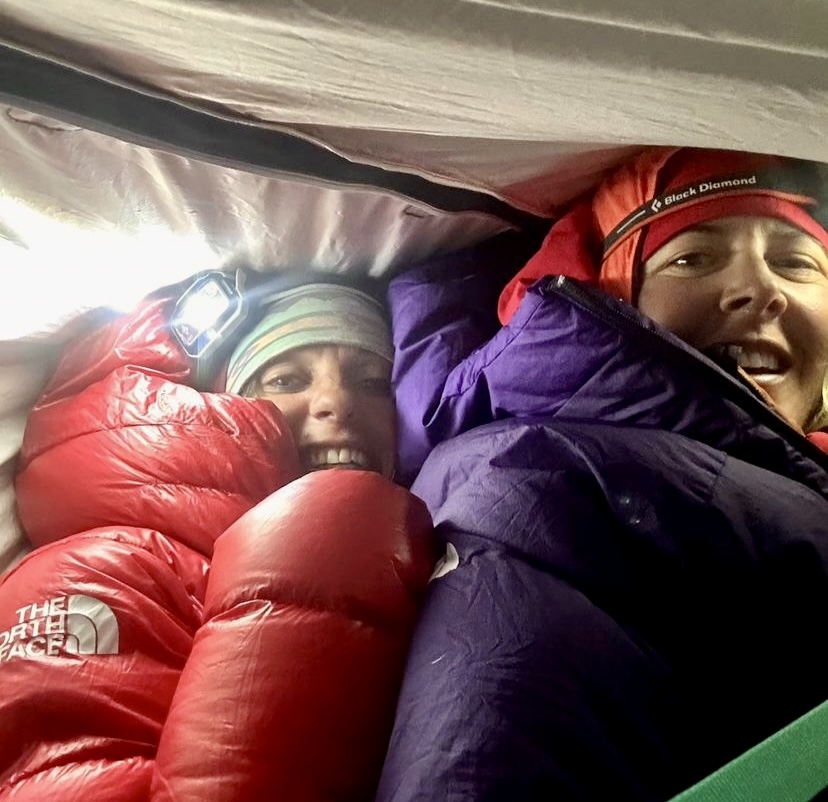
Fanny Schmutz, left, and Chantel Astorga last year on Shivling. Photo: Fanny Schmutz/Chantel Astorga

